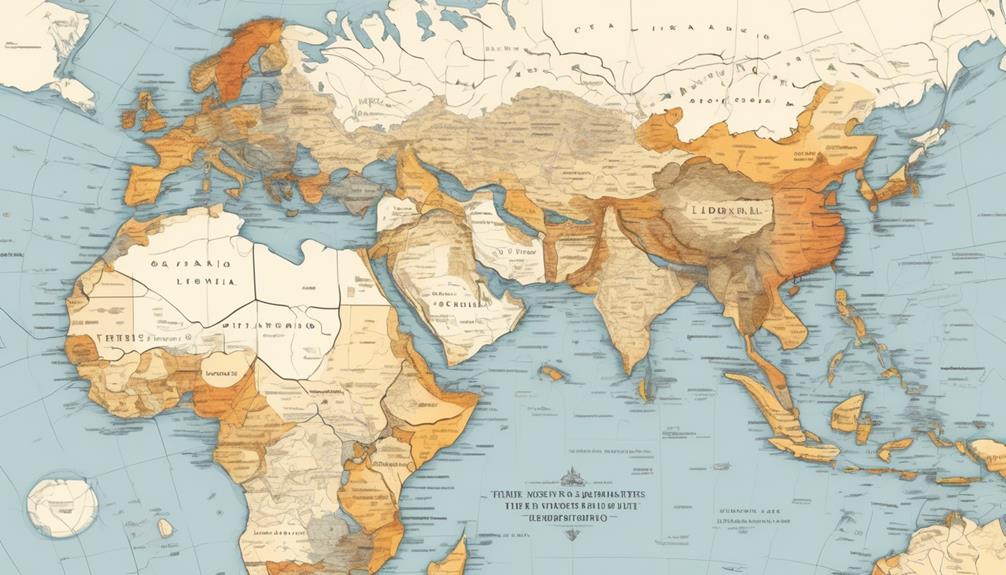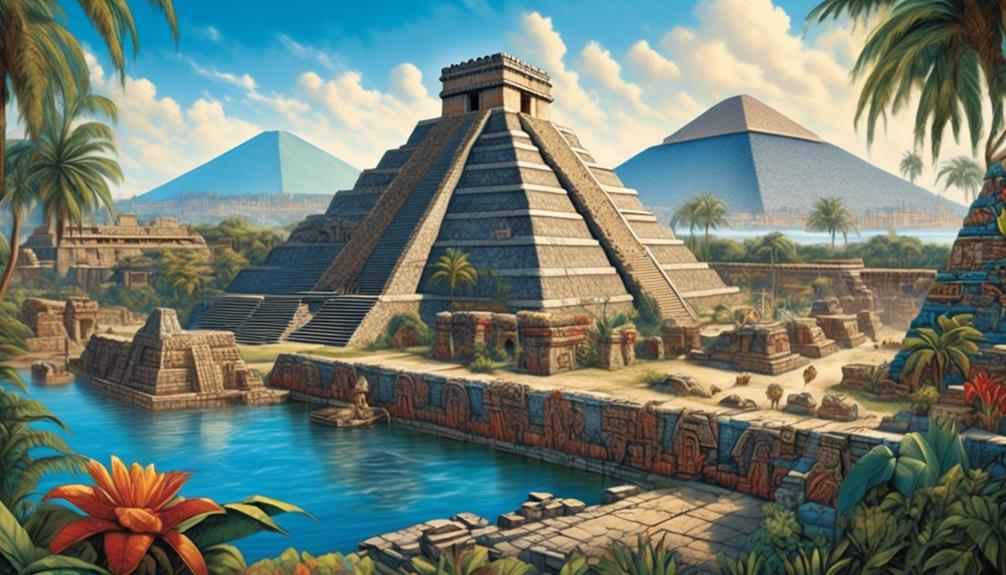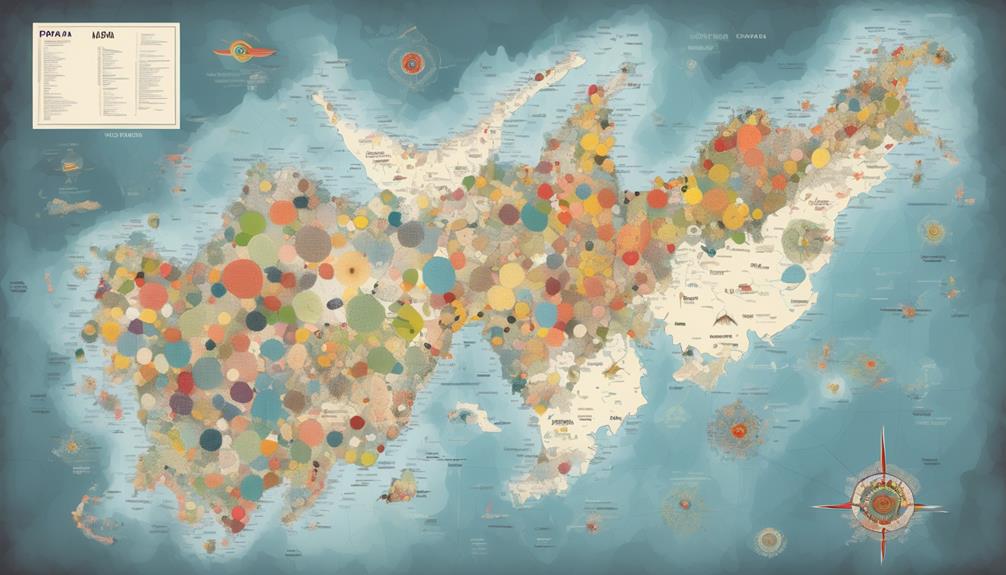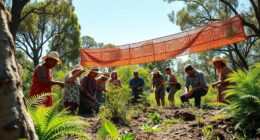When we examine the impact of colonialism on indigenous languages, we are essentially revealing the lasting consequences that continue to shape our contemporary society.
The intricate web of political geography, power dynamics, and cultural suppression has left a lasting imprint on the linguistic landscape of indigenous communities.
As we navigate through the complex interplay of colonization and language, we begin to unravel the profound ways in which these forces have shaped the linguistic identities of indigenous peoples.
The historical legacy of colonialism and its impact on indigenous languages is a multifaceted narrative that demands our attention and understanding.
Key Takeaways
- Colonial borders fragmented indigenous languages, causing linguistic diversity within small geographic areas.
- Forced assimilation policies imposed by colonial powers resulted in the erosion of indigenous languages and cultural identities.
- Suppression and stigmatization of native languages established linguistic hegemony and power dynamics within colonial societies.
- Efforts to revitalize indigenous languages reclaim cultural heritage and promote linguistic diversity.
Colonial Borders and Language Fragmentation
Colonial borders fragmented indigenous languages, causing significant linguistic diversity within small geographic areas.
The impact of colonial borders on indigenous languages was profound. The arbitrary drawing of borders by colonial powers often divided indigenous communities, separating people who spoke the same language. This led to the development of distinct dialects and even entirely new languages within close proximity.
The border impact wasn't just physical but linguistic, as it created barriers to communication and exchange of knowledge among indigenous groups. Language division resulted in the loss of linguistic homogeneity, making it difficult for neighboring communities to understand each other.
As a result, linguistic diversity flourished within these small geographic areas, with each community developing its own unique linguistic identity. This fragmentation of indigenous languages has had lasting effects, influencing the cultural and social dynamics of these communities.
Understanding the colonial roots of language division is crucial in grasping the complexity of indigenous linguistic landscapes and the ongoing efforts to preserve and revitalize these languages.
Forced Assimilation and Language Loss
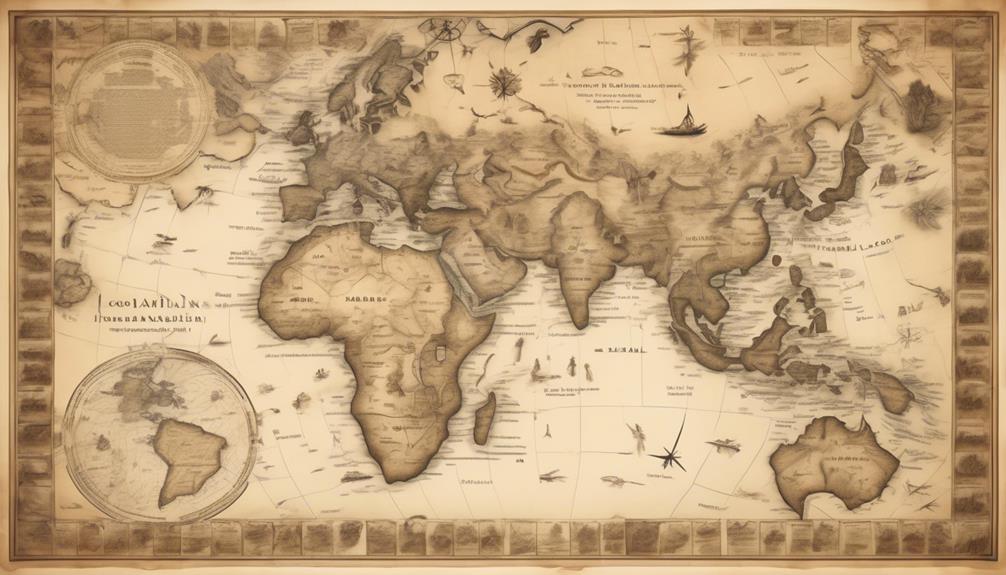
Forced assimilation policies imposed by colonial powers resulted in the rapid erosion of indigenous languages and cultural identities. These policies aimed to replace indigenous languages and traditions with those of the colonizers, leading to the suppression and stigmatization of native languages. This systematic approach to forced assimilation had devastating effects, causing many indigenous communities to abandon their languages in favor of the dominant colonial language.
As a result, the intricate tapestry of indigenous languages that had evolved over centuries began to unravel, leading to a loss of linguistic diversity and cultural heritage.
The impact of forced assimilation on language loss continues to reverberate through indigenous communities today. Many indigenous languages are now endangered or on the brink of extinction, with fewer fluent speakers remaining in each generation. This loss not only affects the linguistic diversity of the world but also undermines the cultural identity and knowledge systems embedded within indigenous languages.
Efforts to revitalize and preserve indigenous languages are crucial in combating the cultural erosion caused by forced assimilation policies. By supporting language revitalization initiatives and promoting multilingualism, we can work towards reclaiming and preserving the rich linguistic and cultural heritage of indigenous communities.
Linguistic Hegemony and Power Dynamics
The suppression and stigmatization of native languages resulted in the establishment of linguistic hegemony and power dynamics within colonial societies. This historical process created a hierarchical linguistic structure, where the dominant colonial language held power and authority over indigenous languages. As a result, linguistic diversity was undermined, and the colonial language became the primary means of communication, governance, and education. This linguistic hegemony not only reinforced the power dynamics between the colonizers and the colonized but also impacted social and economic opportunities.
Within this context, the colonial language became a tool for maintaining control and exerting dominance over indigenous populations. It was used to marginalize and disenfranchise indigenous communities, perpetuating a system of inequality and subjugation. As a consequence, the linguistic diversity that once flourished within these societies was eroded, leading to the loss of cultural heritage and traditional knowledge.
Understanding the dynamics of linguistic hegemony provides insight into the enduring impact of colonialism on indigenous languages and the ongoing struggles for linguistic revitalization and preservation. It underscores the importance of empowering indigenous languages and communities to challenge existing power structures and reclaim their linguistic heritage.
Indigenous Language Revitalization Efforts
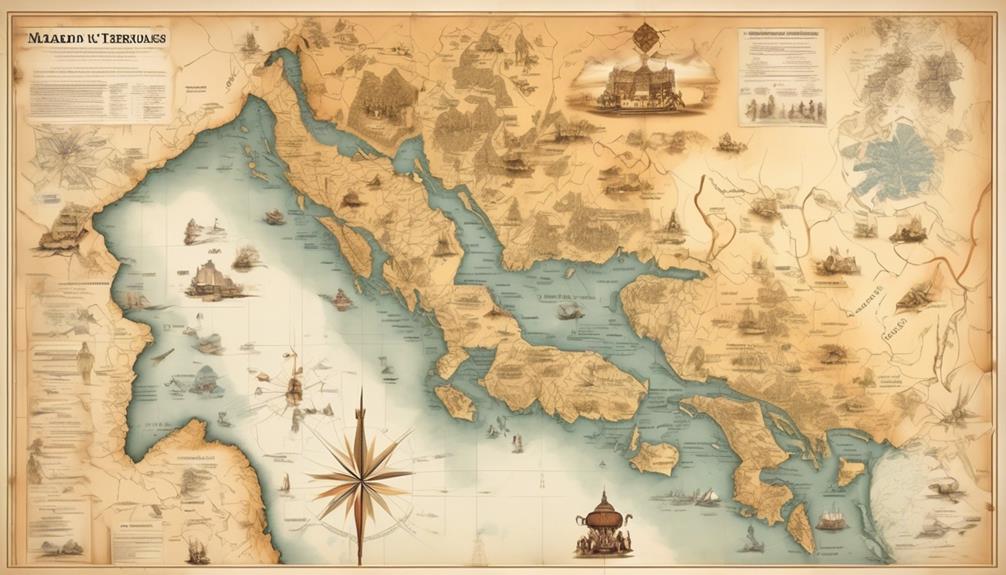
Efforts to revitalize indigenous languages have been instrumental in reclaiming cultural heritage and promoting linguistic diversity within communities affected by colonialism. Cultural preservation lies at the heart of indigenous language revitalization, aiming to safeguard traditional knowledge, values, and practices embedded in these languages. Community engagement plays a pivotal role in these efforts, as it fosters a sense of ownership and pride among community members, encouraging their active participation in language revitalization initiatives.
Indigenous language revitalization programs often encompass a range of activities, including language immersion programs, community language classes, and the development of educational resources such as books, dictionaries, and digital tools. These initiatives not only facilitate language learning but also serve as platforms for intergenerational knowledge transmission, ensuring that indigenous languages continue to thrive within their communities.
Moreover, the integration of indigenous languages into formal education systems further contributes to their revitalization, enabling younger generations to learn and embrace their ancestral languages. By revitalizing indigenous languages, communities reassert their cultural identity and strengthen their resilience against the ongoing impacts of colonialism. These efforts not only preserve linguistic diversity but also uphold the intrinsic connection between language and culture, fostering a renewed sense of cultural pride and heritage.
Impact of Colonial Language Policies
Colonial language policies have significantly impacted the efforts of indigenous language revitalization by imposing linguistic hegemony and suppressing traditional languages within affected communities. These policies have had a profound effect on the preservation of indigenous languages and the cultural identity of indigenous peoples.
Here's a breakdown of the impact of colonial language policies:
- Linguistic Hegemony: Colonial language policies enforced the dominance of the colonizer's language, marginalizing indigenous languages and devaluing their importance within society.
- Suppression of Traditional Languages: Indigenous languages were actively suppressed through punitive measures, including the prohibition of speaking native languages in schools and other public spaces.
- Loss of Cultural Identity: The imposition of colonial languages led to a disconnect between indigenous communities and their cultural heritage, as language is intricately tied to cultural practices and belief systems.
- Hindered Language Preservation Efforts: Colonial language policies created significant barriers to language preservation, making it difficult for indigenous communities to pass down their languages to future generations.
- Long-term Impact: The enduring effects of colonial language policies continue to pose challenges for indigenous language revitalization and the preservation of cultural identity.
Frequently Asked Questions
How Did the Political Geography of Colonialism Impact the Gender Dynamics Within Indigenous Communities and Their Languages?
We've found that the political geography of colonialism significantly impacted gender dynamics within indigenous communities and their languages.
The imposition of colonial languages and cultural norms often led to the marginalization and devaluation of indigenous languages, particularly those spoken by women.
As a result, language revitalization efforts are crucial in addressing these disparities and empowering indigenous communities to reclaim and preserve their linguistic heritage.
What Are the Long-Term Economic Effects of Colonial Language Policies on Indigenous Communities and Their Languages?
In the long term, economic impact of colonial language policies on indigenous communities and their languages has been profound. Language revitalization efforts are essential for addressing language endangerment and preserving cultural diversity.
By recognizing language rights and promoting linguistic diversity, we can foster socioeconomic development and undo the colonial legacy.
It's crucial to understand the historical implications of these policies and work towards promoting indigenous languages for a more inclusive and equitable future.
How Did the Introduction of New Diseases During Colonialism Affect the Ability of Indigenous Communities to Preserve and Pass on Their Languages?
The impact of diseases during colonialism severely affected indigenous communities' ability to preserve and pass on their languages. Loss of knowledge due to high mortality rates hindered language transmission, weakening linguistic resilience.
The introduction of new diseases disrupted the intergenerational transfer of language, contributing to the decline of indigenous languages. This loss has had long-lasting effects on the cultural and linguistic diversity of these communities.
What Role Did Religion Play in the Forced Assimilation of Indigenous Languages During Colonialism?
Role of missionaries in the forced assimilation of indigenous languages during colonialism was significant.
Linguistic suppression was a tool used to impose religious influence. Missionaries often believed in the superiority of their language and sought to replace indigenous languages with their own.
This led to the loss of linguistic diversity and cultural heritage. The assimilation efforts were relentless, impacting indigenous communities profoundly.
This topic is critical for understanding the complexities of colonialism's impact on language and culture.
How Did Colonial Language Policies Impact the Cultural Identity and Traditions of Indigenous Communities?
Colonial language policies significantly impacted the cultural identity and traditions of indigenous communities. The suppression of indigenous languages led to the erosion of cultural preservation and identity.
However, language revitalization efforts have been crucial in reclaiming and preserving our heritage. These efforts empower indigenous communities to reclaim their linguistic and cultural heritage, fostering a renewed sense of pride and identity.
This ongoing work is vital for the preservation of indigenous languages and traditions.
Conclusion
In conclusion, colonialism's impact on indigenous languages has been profound. It has created fragmented borders, forced assimilation, and linguistic hegemony.
However, indigenous language revitalization efforts are pushing back against these historical injustices. We must continue to support and uplift indigenous languages, recognizing the power dynamics at play and the importance of linguistic diversity.
Let's work together to undo the damage of colonial language policies and celebrate the resilience of indigenous languages.
